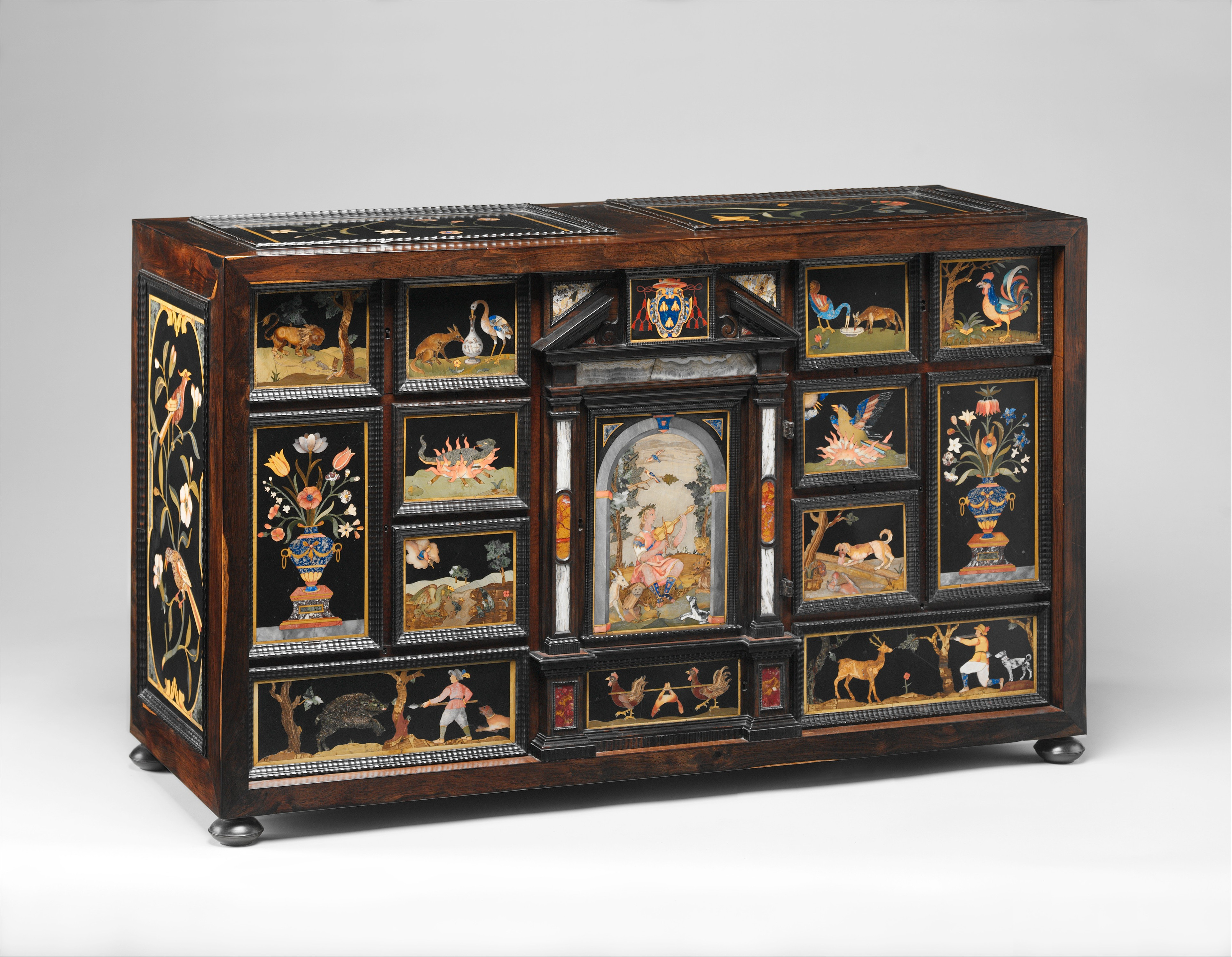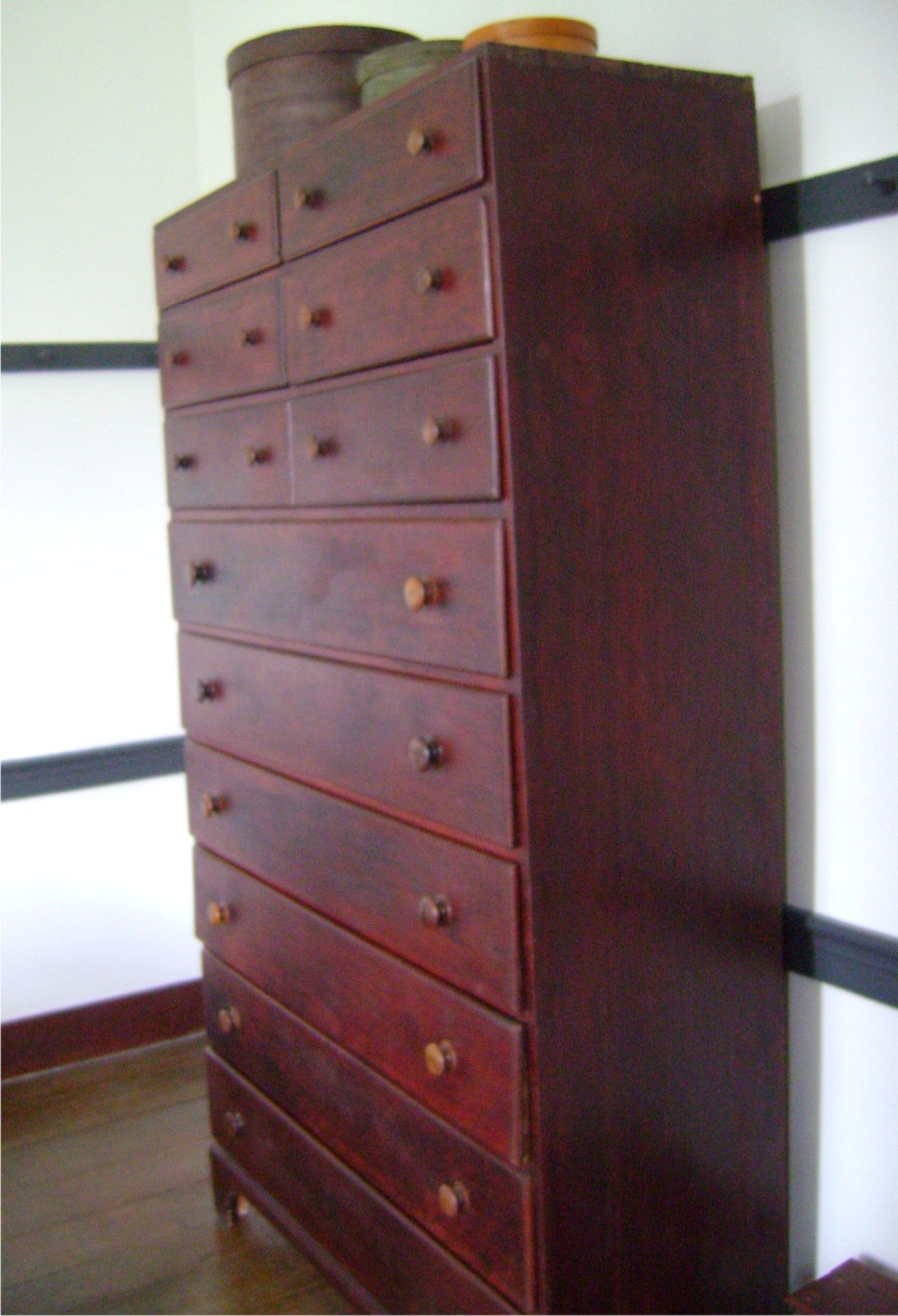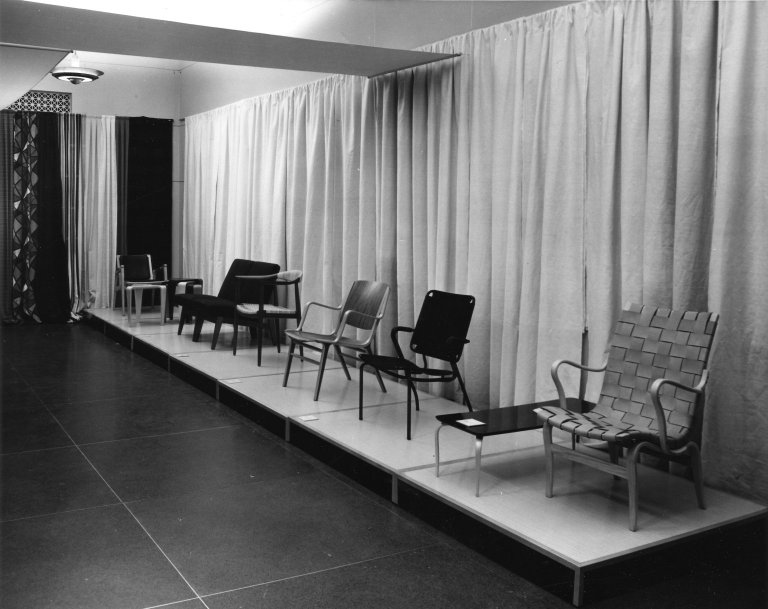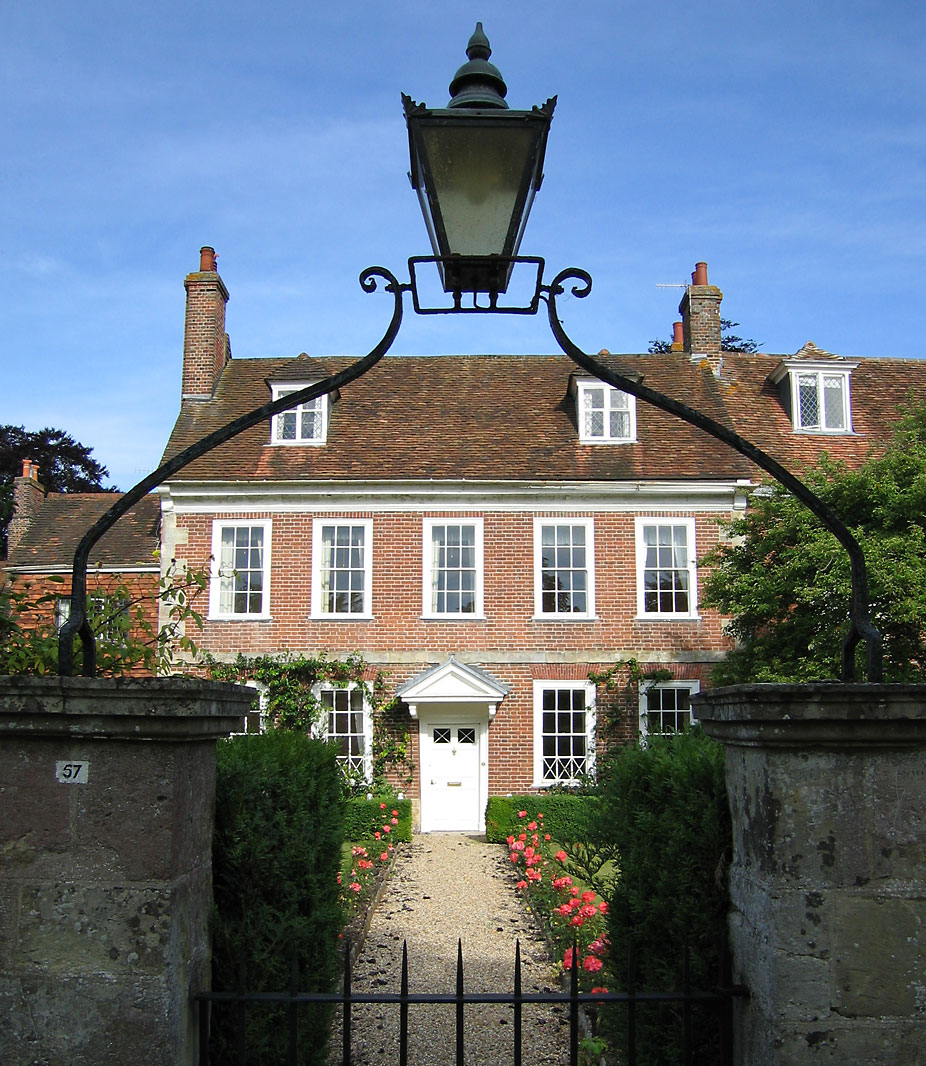|
Widdicomb Furniture Company
Widdicomb Furniture Company was an American furniture company. History The company was founded in 1858 when George Widdicomb started a cabinet shop in Grand Rapids, Michigan. The company grew and, with twelve employees, moved to a new, larger location. His four sons went into business with him and the company was named George Widdicomb & Sons. All four sons would serve in the American Civil War. The company dissolved in 1863, while all four sons were enlisted. The oldest sons opened a small furniture shop in 1864, with the other two brothers joining them around when the war ended. Brother George Widdicomb died in March 1866. In 1868 the store had grown considerably and was moved to a new location in Grand Rapids. They had 25 employees. T.F. Richards came into business with the sons on January 1, 1869. They renamed the business Widdicomb Bros. & Richards. They built a larger building and had a capital of $12,000. They formed the Widdicomb Furniture Company on December 1, 1873. E ... [...More Info...] [...Related Items...] OR: [Wikipedia] [Google] [Baidu] |
Cabinet (furniture)
A cabinet is a case or cupboard with shelves and/or drawers for storing or displaying items. Some cabinets are stand alone while others are built in to a wall or are attached to it like a medicine cabinet. Cabinets are typically made of wood (solid or with veneers or artificial surfaces), coated steel (common for medicine cabinets), or synthetic materials. Commercial grade cabinets usually have a melamine-particleboard substrate and are covered in a high pressure decorative laminate, commonly referred to as Wilsonart or Formica. Cabinets sometimes have one or more doors on the front, which are mounted with door hardware, and occasionally a lock. Cabinets may have one or more doors, drawers, and/or shelves. Short cabinets often have a finished surface on top that can be used for display, or as a working surface, such as the countertops found in kitchens. A cabinet intended to be used in a bedroom and with several drawers typically placed one above another in one or more co ... [...More Info...] [...Related Items...] OR: [Wikipedia] [Google] [Baidu] |
Wardrobe
A wardrobe or armoire or almirah is a standing closet used for storing clothes. The earliest wardrobe was a chest, and it was not until some degree of luxury was attained in regal palaces and the castles of powerful nobles that separate accommodation was provided for the apparel of the great. The name of wardrobe was then given to a room in which the wall-space was filled with closets and lockers, the drawer being a comparatively modern invention. From these cupboards and lockers the modern wardrobe, with its hanging spaces, sliding shelves and drawers, evolved slowly. Throughout the chronological changes in the form of the enclosure, it has more or less retained its preset function as a place to retain a king’s robe. The word has gained coinage over successive generations as an independent store for among others, preserving precious items for a ruler like gold, well highlighted in King Edward I of England's times. It is also a simple patio where clothes are hung from m ... [...More Info...] [...Related Items...] OR: [Wikipedia] [Google] [Baidu] |
Furniture Companies Of The United States
Furniture refers to movable objects intended to support various human activities such as seating (e.g., stools, chairs, and sofas), eating (tables), storing items, eating and/or working with an item, and sleeping (e.g., beds and hammocks). Furniture is also used to hold objects at a convenient height for work (as horizontal surfaces above the ground, such as tables and desks), or to store things (e.g., cupboards, shelves, and drawers). Furniture can be a product of design and can be considered a form of decorative art. In addition to furniture's functional role, it can serve a symbolic or religious purpose. It can be made from a vast multitude of materials, including metal, plastic, and wood. Furniture can be made using a variety of woodworking joints which often reflects the local culture. People have been using natural objects, such as tree stumps, rocks and moss, as furniture since the beginning of human civilization and continues today in some households/campsites. Archae ... [...More Info...] [...Related Items...] OR: [Wikipedia] [Google] [Baidu] |
1858 Establishments In Michigan
Events January–March * January – **Benito Juárez (1806–1872) becomes Liberal President of Mexico. At the same time, conservatives install Félix María Zuloaga (1813–1898) as president. **William I of Prussia becomes regent for his brother, Frederick William IV of Prussia, Frederick William IV, who had suffered a stroke. * January 9 ** British forces finally defeat Revolt of Rajab Ali#Defeat, Rajab Ali Khan of Chittagong ** Anson Jones, the last president of the Republic of Texas, commits suicide. * January 14 – Orsini affair: Felice Orsini and his accomplices fail to assassinate Napoleon III in Paris, but their Orsini bomb, bombs kill eight and wound 142 people. Because of the involvement of French émigrés living in Britain, there is a brief anti-British feeling in France, but the emperor refuses to support it. * January 25 – The ''Wedding March (Mendelssohn), Wedding March'' by Felix Mendelssohn becomes a popular wedding recessional, after it i ... [...More Info...] [...Related Items...] OR: [Wikipedia] [Google] [Baidu] |
Defunct Furniture Manufacturers
{{Disambiguation ...
Defunct (no longer in use or active) may refer to: * ''Defunct'' (video game), 2014 * Zombie process or defunct process, in Unix-like operating systems See also * * :Former entities * End-of-life product * Obsolescence Obsolescence is the state of being which occurs when an object, service, or practice is no longer maintained or required even though it may still be in good working order. It usually happens when something that is more efficient or less risky r ... [...More Info...] [...Related Items...] OR: [Wikipedia] [Google] [Baidu] |
Grand Rapids Public Library
The Grand Rapids Public Library located in downtown Grand Rapids, Michigan Michigan () is a U.S. state, state in the Great Lakes region, Great Lakes region of the Upper Midwest, upper Midwestern United States. With a population of nearly 10.12 million and an area of nearly , Michigan is the List of U.S. states and ... and also includes seven branch libraries throughout the city. The library system has 170 full and part-time employees and has a service area of roughly 197,000 people. History The Grand Rapids Public Library was founded in 1871 and was located within the Grand Rapids City Hall. In 1904, the library moved to the Ryerson building which served as a permanent home for the library. The building was a gift from arts and education benefactor, and native son, Martin A. Ryerson. In 1967, the library expanded to more than double in size. The addition was named the Keeler wing, in honor of a $1.2 million gift from Mike and Mary Ann Keeler. In 2001, renovation be ... [...More Info...] [...Related Items...] OR: [Wikipedia] [Google] [Baidu] |
Cooper-Hewitt, National Design Museum
Cooper Hewitt, Smithsonian Design Museum is a design museum housed within the Andrew Carnegie Mansion in Manhattan, New York City, along the Upper East Side's Museum Mile (New York City), Museum Mile. It is one of 19 museums that fall under the wing of the Smithsonian Institution and is one of three Smithsonian facilities located in New York City, the other two being the National Museum of the American Indian's George Gustav Heye Center in Bowling Green (New York City), Bowling Green and the Archives of American Art New York Research Center in the Flatiron District. It is the only museum in the United States devoted to historical and contemporary design. Its collections and exhibitions explore approximately 240 years of design aesthetic and creativity. History In 1895, the granddaughters of Peter Cooper, Hewitt Sisters, Sarah Cooper Hewitt, Hewitt Sisters, Eleanor Garnier Hewitt and Amy Hewitt Green, asked the Cooper Union for a space to create a Museum for the Arts of Decoratio ... [...More Info...] [...Related Items...] OR: [Wikipedia] [Google] [Baidu] |
Shaker Furniture
__NOTOC__ Shaker furniture is a distinctive style of furniture developed by the United Society of Believers in Christ's Second Appearing, commonly known as Shakers, a religious sect that had guiding principles of simplicity, utility and honesty. Their beliefs were reflected in the well-made furniture of minimalist designs. History Shaker communities were largely self-sufficient: in their attempt to separate themselves from the outside world and to create a heaven-on-earth, members grew their own food, constructed their own buildings, and manufactured their own tools and household furnishings.—Metropolitan Museum of Art''Shaker furniture''. Metropolitan Museum of Art. Retrieved March 23, 2014. Overview Furniture was made thoughtfully, with functional form and proportion. Rather than using ...[...More Info...] [...Related Items...] OR: [Wikipedia] [Google] [Baidu] |
Scandinavian Design
Scandinavian design is a design movement characterized by simplicity, minimalism and functionality that emerged in the early 20th century, and subsequently flourished in the 1950s throughout the five Nordic countries: Denmark, Finland, Norway, Sweden, and Iceland. Scandinavian designers are known especially for household goods including furniture, textiles, ceramics, lamps, and glass, but Scandinavian design has been extended to industrial design such as of consumer electronics, mobile phones, and cars. Overview In 1914, the Danish ''Selskabet for Dekorativ Kunst'' (Company for Decorative Arts) launched its ' (literally "Graceful Work") magazine. Its title became the name of a new Danish style of arts and crafts, both in objects and in architecture, to rival Art Nouveau and Jugendstil. From the 1930s, designers such as Alvar Aalto (architecture, furniture, textiles), Arne Jacobsen (chairs), Borge Mogensen (furniture), Hans J. Wegner (chairs), Verner Panton (plastic chairs), ... [...More Info...] [...Related Items...] OR: [Wikipedia] [Google] [Baidu] |
Georgian Revival
Georgian architecture is the name given in most English-speaking countries to the set of architectural styles current between 1714 and 1830. It is named after the first four British monarchs of the House of Hanover— George I, George II, George III, and George IV—who reigned in continuous succession from August 1714 to June 1830. The so-called great Georgian cities of the British Isles were Edinburgh, Bath, pre-independence Dublin, and London, and to a lesser extent York and Bristol. The style was revived in the late 19th century in the United States as Colonial Revival architecture and in the early 20th century in Great Britain as Neo-Georgian architecture; in both it is also called Georgian Revival architecture. In the United States the term "Georgian" is generally used to describe all buildings from the period, regardless of style; in Britain it is generally restricted to buildings that are "architectural in intention", and have stylistic characteristics that ... [...More Info...] [...Related Items...] OR: [Wikipedia] [Google] [Baidu] |
Italian Renaissance
The Italian Renaissance ( it, Rinascimento ) was a period in Italian history covering the 15th and 16th centuries. The period is known for the initial development of the broader Renaissance culture that spread across Europe and marked the transition from the Middle Ages to modernity. Proponents of a "long Renaissance" argue that it started around the year 1300 and lasted until about 1600. In some fields, a Proto-Renaissance, beginning around 1250, is typically accepted. The French word ''renaissance'' (corresponding to ''rinascimento'' in Italian) means 'rebirth', and defines the period as one of cultural revival and renewed interest in classical antiquity after the centuries during what Renaissance humanists labelled as the "Dark Ages". The Renaissance author Giorgio Vasari used the term ''rinascita'' 'rebirth' in his ''Lives of the Most Excellent Painters, Sculptors, and Architects'' in 1550, but the concept became widespread only in the 19th century, after the work of ... [...More Info...] [...Related Items...] OR: [Wikipedia] [Google] [Baidu] |
Colonial Revival Movement
The Colonial Revival movement was a national expression of early North American culture, primarily the built and artistic environments of the east coast colonies. The Colonial Revival is generally associated with the eighteenth-century provincial fashion for the Georgian and Neoclassical styles. The movement inspired a variety of expressions to fulfill symbolic and functional needs during times of great change. The Colonial Revival was motivated by a range of historical events, particularly a rapidly growing industrial way of life and increasing immigration. Beyond its association with the development of a national historic consciousness that began in the 1870s, the Colonial Revival style in architecture, decorative arts, landscape and garden design, and American art has served to promote notions of democracy, patriotism, good taste, and moral superiority. Although its popularity continues to exist, particularly in architecture and decorative arts, the movement reached its peak ... [...More Info...] [...Related Items...] OR: [Wikipedia] [Google] [Baidu] |








